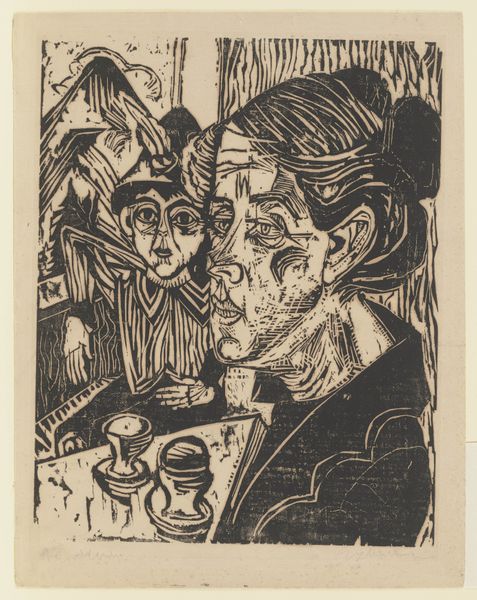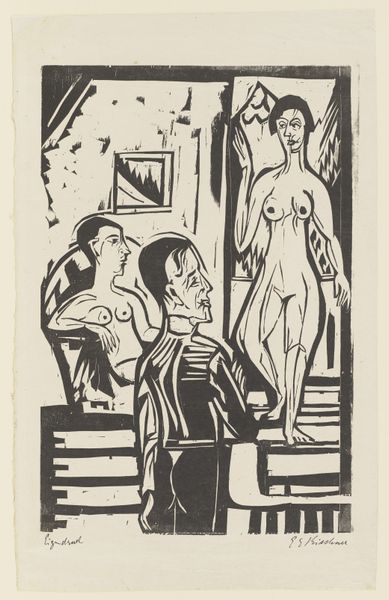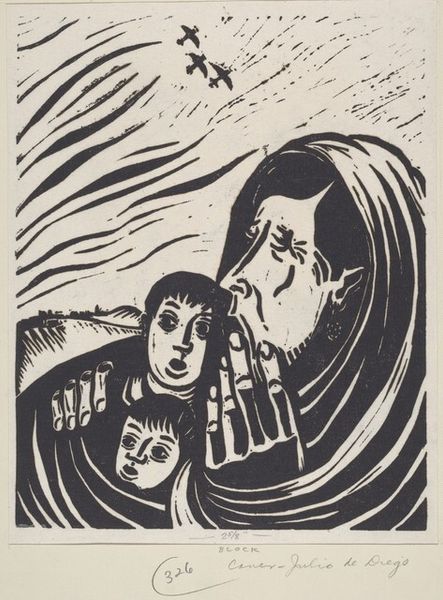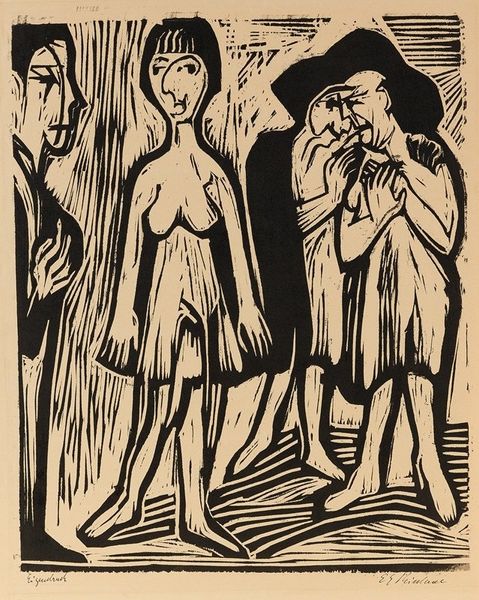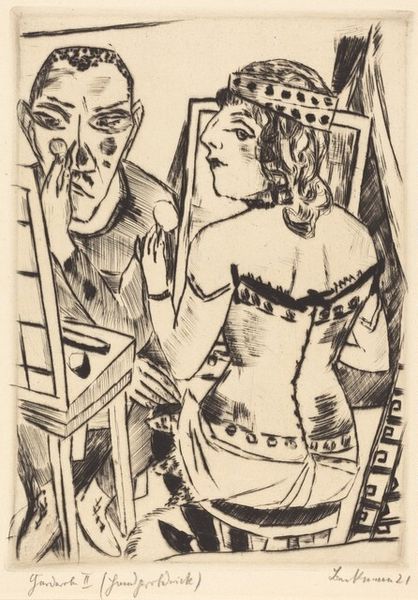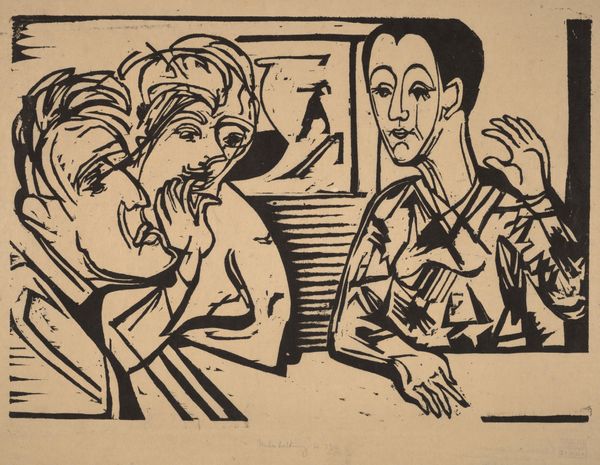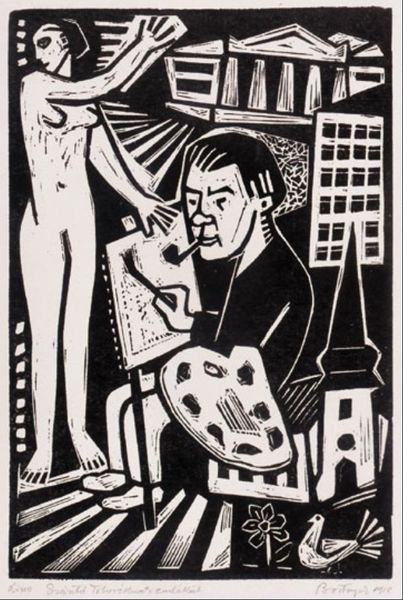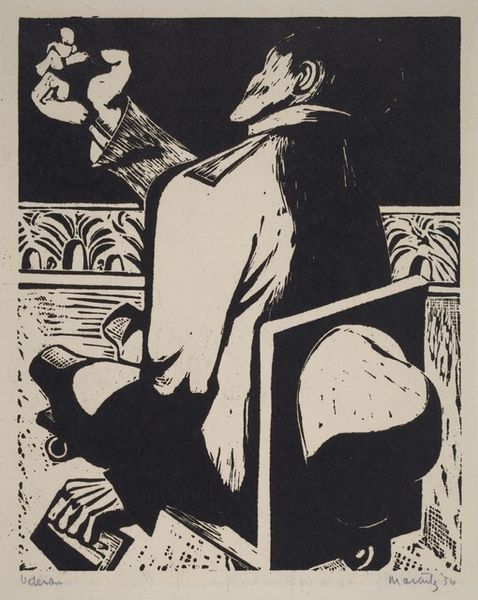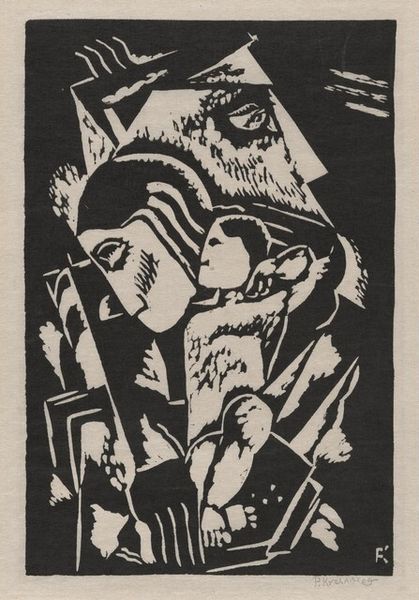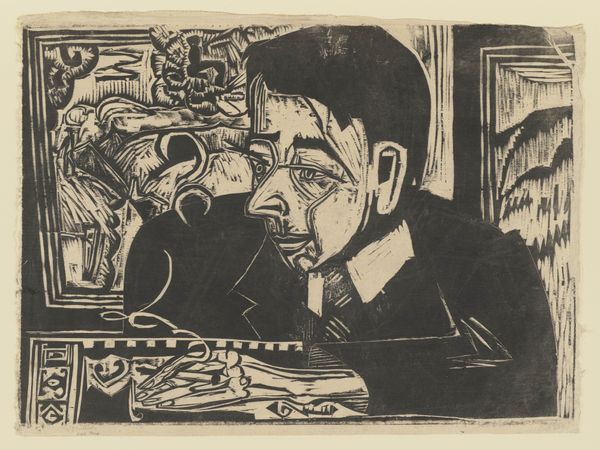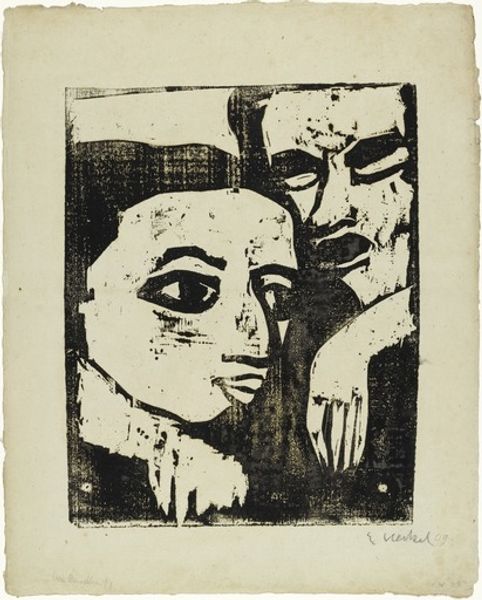
drawing, print, woodcut
#
portrait
#
drawing
# print
#
pen sketch
#
german-expressionism
#
figuration
#
expressionism
#
woodcut
#
genre-painting
Copyright: Public Domain: Artvee
Curator: This is Ernst Ludwig Kirchner's 1921 woodcut, "Old Woman and Young Woman." What strikes you first? Editor: Unease. A certain...discord. It's raw, like exposed nerves. That harsh black ink amplifying every line, every wrinkle. Is this conversation friendly, I wonder? Curator: Well, Kirchner's printmaking was central to his process, right? It offered him a way to engage directly with the societal tensions brewing post-World War One in Germany. That rough, deliberately unrefined technique--that’s a statement. The tools were simple, the materials accessible...it's almost a democratic medium in contrast to oil painting, maybe even a reflection of the anxieties of class division that permeate the Weimar Republic. Editor: "Democratic" seems an odd word here. Look at those faces—caricatures, almost. The old woman looks severe, and the younger one seems trapped, resigned. I feel this suppressed rage pulsing underneath it all. As if the wood itself is screaming with frustration. And is that really only ink? It feels almost tactile... tar-like, something heavy weighing down on them. Curator: Indeed. The dense black ink does contribute to a weighty sense. Remember that Expressionist artists weren’t aiming for pure representation. This woodcut captures a feeling as much as it does a scene. And we shouldn’t forget the paper, either: it grounds the emotional excess. Kirchner used what was available and inexpensive in his social circles at the time. His themes explore complex anxieties, like the tensions between generations reflected on their shared table here, over those ambiguous props...scissors, containers...materials to be consumed. Editor: It's almost theatrical, like a dark, brooding stage. I wonder about their relationship, though; grandmother and granddaughter, perhaps? I see a reflection of past and future... both women facing their own peculiar prison. All of that energy compressed onto a single block, the grain forcing his hand as much as he guides it. Amazing to realize something so constrained by its material origins can spark such vast interior worlds in the viewer. Curator: Yes, from materials immediately available from his surroundings, to emotional realities both of these two individuals embody, the tensions of German Expressionism really show how deeply the artists wrestled with their place in the modern world. Editor: Agreed. Something tells me this dialogue won't stop whispering anytime soon, not even as we leave it.
Comments
No comments
Be the first to comment and join the conversation on the ultimate creative platform.

